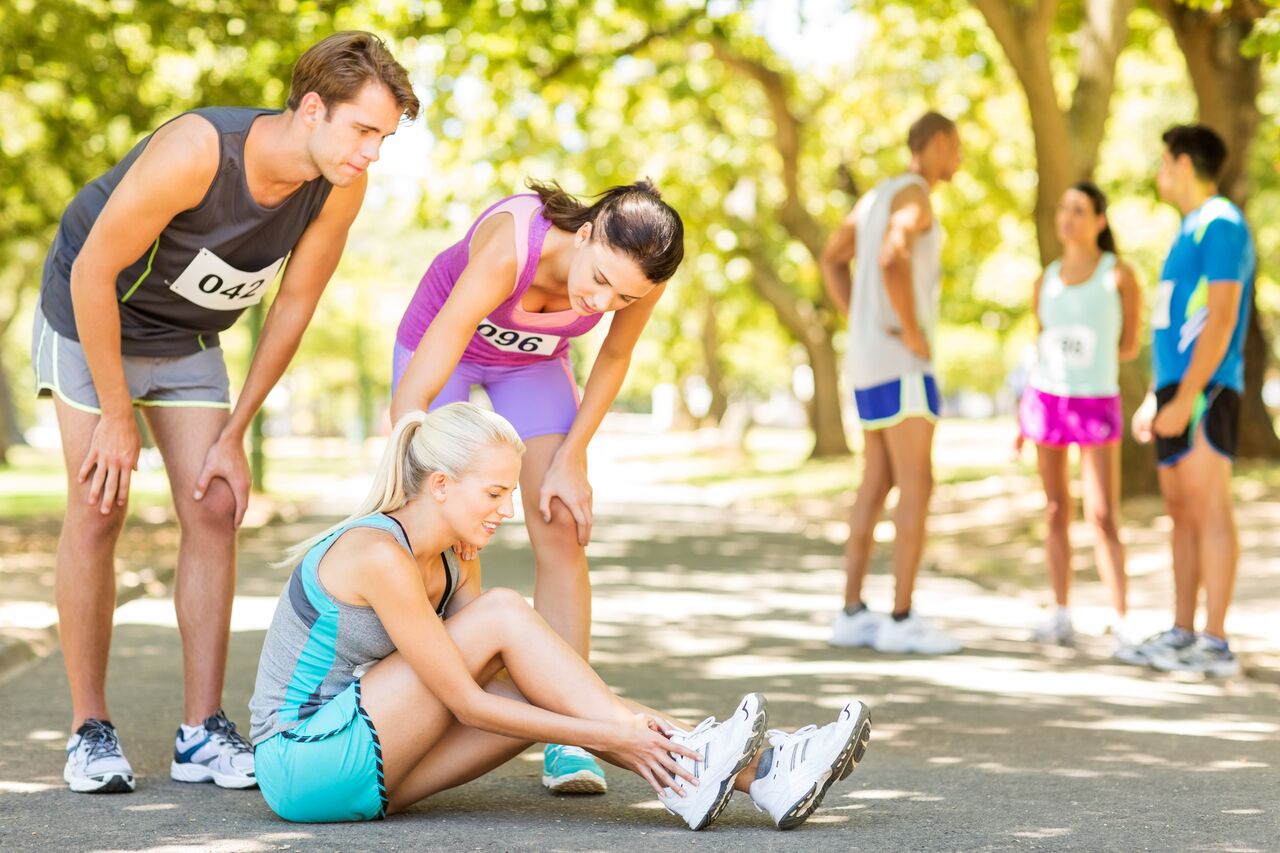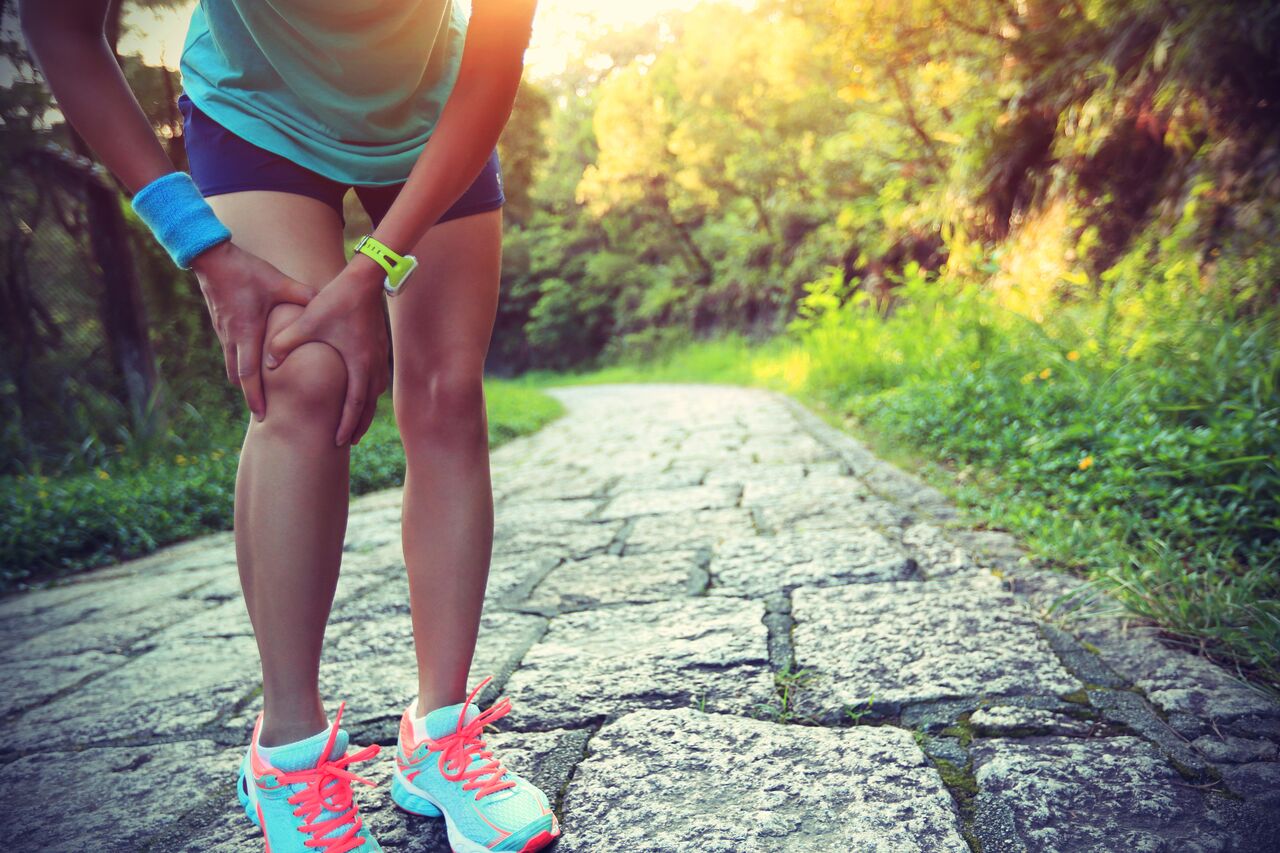What is the difference between a sprain and a strain?

SPRAINS are the stretching or tearing of ligament tissue whilst STRAINS are the stretching or tearing of a muscle or tendon. We often hear the term ‘pulled muscle’ as well which describes an overstretched or torn muscle. Therefore, pulled muscles are almost always strains. When we have a sprain we may experience bruising around the affected joint whereas with strains, because they affect the muscles, muscle spasms are more likely to occur.
Ligaments are fibrous bands that support the joints and connect two bones together; they are responsible for preventing over-extension of the joints in normal movement. Tendons on the other hand, are fibrous cords of tissue that connect muscles to bones.
Key differences include:
• Sprains are caused by overstretching or tearing of ligament tissue
• Strains are often caused by overloading a muscle or by repetitive movement
• Sprains affect our ligaments and joints
• Strains affect our muscles and tendons
• Sprains can result in limited joint mobility
• Strains can result in limited muscle mobility
What is a sprain?

Sprains affect the ligaments and are a stretching or tearing of a certain ligament. Ligaments are fibrous bands that support the joints and connect two bones together. They prevent the joints from over-extending in normal use. The most common location for a muscle sprain is the ankle – people commonly say they’ve sprained their ankle.
Sprains often result in symptoms such as:
• Pain
• Swelling
• Bruising
• Limited mobility of the affected joint
What causes a sprain?
A sprain occurs when you bend a joint unnaturally or tear a ligament from placing severe stress on a joint. Situations such as twisting an ankle, playing racket sports, or collision to their knee, forces the joint out of its normal range of motion and can result in a sprain. Pain, swelling and bruising may follow and a pop or tear may be felt – sometimes the pop or tear is even audible to the human ear!
The most common causes of sprains include:
• Walking or exercising on uneven surfaces
• Twisting awkwardly during exercise
• Falling and landing on a joint
• Overextension when exercising
What is a strain?
Strains affect the muscles and the tendons that connect the muscle to the end of the bone it pulls on. Muscle strain can happen in any muscle but they’re most common in your lower back, neck, shoulder and hamstring.
Strains often result in symptoms such as:
• Pain
• Swelling
• Muscle spasms
• Limited mobility in the affected muscle
What causes a strain?
Strains usually fall into one of the below categories – chronic, acute and/or RSI.
Chronic strains – strains that have persistent symptoms – usually occur as a result of overuse or repetitive movement. The most common types of chronic strains are those that affect the back and those that involve inflammation of a tendon (also known as tendonitis).
Acute strains – strains that have short-term symptoms – are often caused by overload or injury to a muscle. The most common causes are lifting a heavy weight which overloads the muscles and results in a strain.
Repetitive Strain Injury (RSI) – you may also have come across this term when exploring what to do about strain. Repetitive Strain Injury, or RSI, is also known as a chronic strain and arises as a result of a repetitive movement. These sorts of strains are often experienced by golfers, hairdressers, and those who spend all day typing at a computer.
How to recover from a sprain or strain
Often muscle sprains and strains can be treated at home and often aren’t serious enough to warrant any worry. However, sometimes, depending on how and why your original injury was sustained, you may need to consult a doctor as some of the injuries that cause sprains can also result in more serious injury such as a bone fracture.
When it comes to recovering from a strain or sprain, most opt for the RICE approach – this doesn’t mean eating more rice or sticking some rice to your injury! RICE stands for rest, ice, compression and elevation and is thought to be particularly important during the first 24 to 72 hours after the injury took place.
Rest – this is important as it means not putting any weight on the area for the first 24-72 hours of injury as this could risk making your injury worse.
Ice – often people get confused or unsure about whether they should put heat or ice on their injury (you can read more about this in my blog ‘Heat or ice: which is best for your pain or injury?’) but, in this case, ice trumps heat. Why? Ice constricts the blood vessels and therefore the blood flow to the injury this helps to slow and prevent swelling and excessive inflammation.
For injuries that last longer than 72 hours heat is usually best. Heat helps to encourage good circulation to the area which allows fresh blood to deliver important nutrients which is what your injury needs at this time.
Compression – this involves wrapping the injury in a bandage or compression sleeve regardless of whether it is an injured wrist, ankle, knee or elbow. Similar to ice, compression aims to keep the swelling to a minimum.
Elevation –if you can elevate the injured area this helps to stop fluid from collecting there which also helps to prevent as much swelling from taking place.
 Herbal remedies can also be of benefit here, particularly if you don’t want to take pain killers which often have side effects. Some herbs, such as Arnica, can help to naturally soothe the inflammatory process and reduce pain.
Herbal remedies can also be of benefit here, particularly if you don’t want to take pain killers which often have side effects. Some herbs, such as Arnica, can help to naturally soothe the inflammatory process and reduce pain.
Atrogel is our licensed herbal pain relief gel that can be used to relieve muscle and joint pain, sprains, strains and bruising. I always have a tube of our Atrogel handy in these cases as it contains fresh extracts of Arnica flowers combined in a handy gel format that has been proven to work as well as a topical ibuprofen pain relief gel!1
Future prevention
To prevent strains or sprains in the future check out my top tips below to see how you can avoid them.
• Regular stretching and strengthening exercises can help to minimise your risk of experiencing a muscle strain or sprain
• Run, walk or exercise on even surfaces
• Always, always warm up before exercising – you can find easy warm up exercises here
• Replace athletic shoes on a regular basis
• Take regular breaks if you think you’re prone to experiencing repetitive strain injury.
1 Rheumatol Int 27:585 – 591, 2007 (Widrig, Suter, Saller, Melzer)








